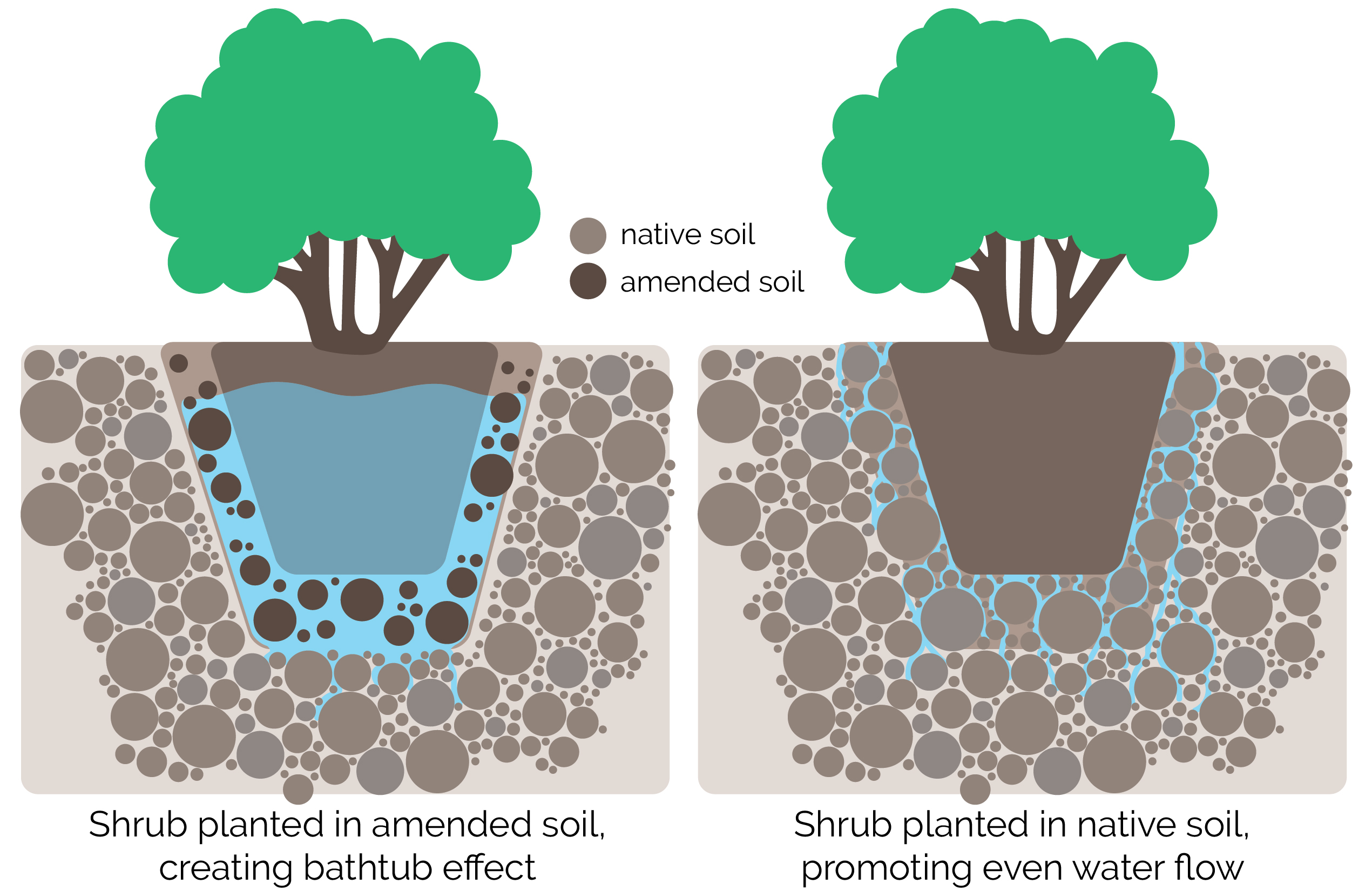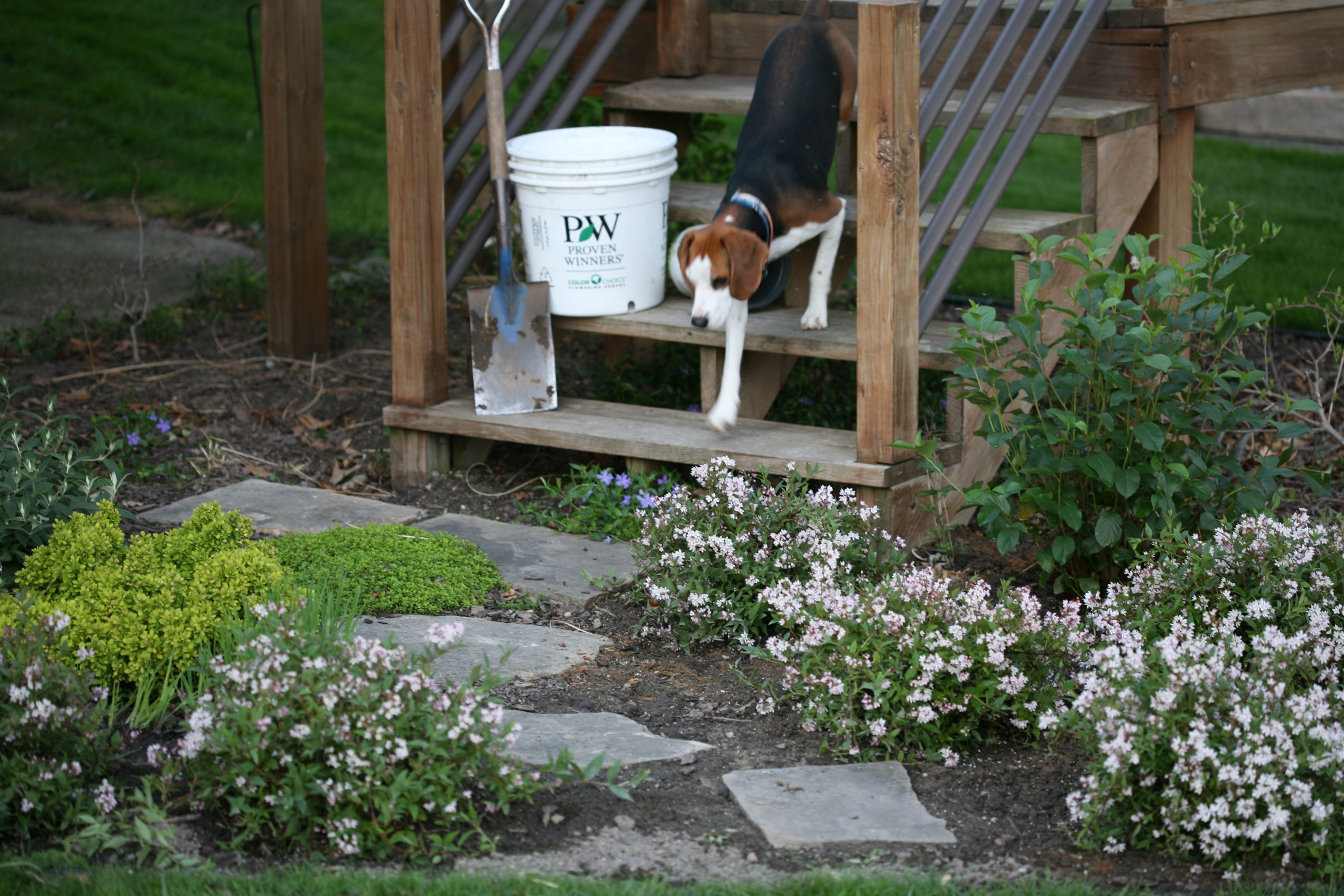Should you amend your soil when you plant?
Wondering if you should amend your soil when you plant? Our answer is no: we do not recommend adding anything to the soil when you plant one of our shrubs – no top soil, garden soil, potting mix, potting soil, compost, manure, or any other type of bagged or baled product out there.

We understand the thought process behind wanting to make the best possible “home” for your new shrub, but not only does this create unnecessary expense and work, it can also seriously set back or even kill your plant. In fact, in nearly ten years of responding to gardening questions on this website, the number one reason that I have seen new shrubs die is because the soil was amended at planting time. It seems like such a good idea – so what gives? The answer is a phenomenon called the Bathtub Effect.
Here's what happens: all of the amendments that are commonly used have large spaces between their particles, which makes them capable of holding large quantities of water. As such, when you water your new shrub, you end up applying quite a bit. However, the natural soil surrounding the hole has much smaller spaces between its particles, and cannot hold nearly as much water. So as gravity takes its toll and the water starts to drain downward and outward, the effect is a bit like a large crowd trying to fit through a tiny door – and as the water waits for its chance to drain through to your natural soil, it just sits around the roots of the plant, often leading to root rot.

You may be thinking, “I’ve added compost to my plantings every time and have never had this happen!” However, there are three factors that further complicate this issue. Number one is clay soil: not only is it the type of soil where this problem is most likely to develop since it has the smallest spaces between its particles, it’s also the soil that people are most likely to amend. Clay soil is definitely difficult for people to work in, but for the roots of most shrubs, it’s really not that challenging, and no special concessions need to be made. The second issue is that some shrubs are far more susceptible to this issue than others, and they happen to be some of our most popular: lilacs, panicle hydrangeas, and butterfly bush. Shrubs that can tolerate wet soil, like itea, clethra, and winterberry holly may show no ill effects at all. Finally, the third issue is that overwatering and underwatering can look identical. Both typically manifest as wilting, so one is liable to worsen the situation by applying even more water, thinking that’s what it needs.
If you amended your soil and your plant is suffering, it likely can still be saved if you take swift action. Remove it as soon as possible and place it in a cool, shaded spot to let the root ball dry out and get some oxygen. If possible, place a light cloth, like an old sheet or even some burlap, over the roots. It should dry out fairly quickly. While you wait, thoroughly mix the amendment with your natural soil, digging a bit beyond the hole and also including the backfill, until they are essentially indistinguishable from one another. Once the hole and roots have dried out a bit, you can replant in that same spot. The shrub may drop its foliage if it was severely stressed, but keep a close eye on it, making sure the soil around it is neither too wet nor too dry (you can use a bbq skewer or length of bamboo stake as a “dipstick” to check below the surface, or purchase an inexpensive moisture meter), and it should recover in time.
I know there are those of you out there that have your planting rituals and practices, and will continue to amend your soil. If this includes you, do your best to thoroughly mix your chosen amendment with your natural soil and the backfill before planting. By intermixing the two media, you can “break the bathtub,” however, this truly isn’t necessary. All your new shrub really needs to reach its full potential is the right amount of water, sunshine, and time.




